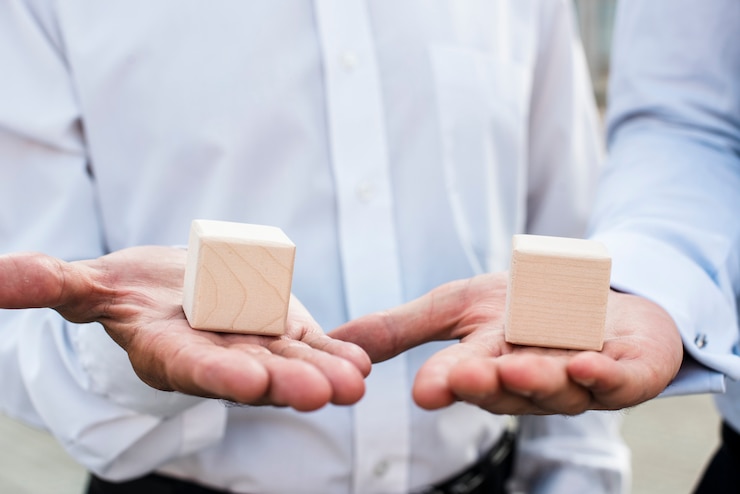Wood has been a fundamental building material for centuries, used in everything from furniture to flooring and home construction. With advancements in technology, a new alternative known as tech wood (or engineered wood) has emerged, offering different benefits and drawbacks compared to real wood (natural solid wood). The debate over which one is better depends on various factors such as durability, cost, sustainability, and aesthetics. While real wood is known for its timeless beauty and strength, tech wood boasts innovation and versatility. But which one is right for your needs? In this article, we will compare tech wood and real wood across multiple aspects to help you make an informed decision.
What Is Tech Wood?
Tech wood, also known as engineered wood, is a man-made wood product created by binding wood fibers, particles, or veneers with adhesives under high pressure. It comes in different forms such as plywood, MDF (medium-density fiberboard), particle board, and laminated veneer lumber (LVL). Unlike real wood, which is a single solid piece, tech wood is designed for stability and efficiency, offering a more controlled and uniform structure.
One of the biggest advantages of tech wood is its resistance to warping and moisture. Since it is engineered with multiple layers, it does not expand or contract as much as natural wood when exposed to humidity. This makes it an excellent choice for high-moisture areas like kitchens and bathrooms. Additionally, tech wood is more affordable because it makes use of recycled wood fibers, reducing waste and promoting sustainability.
What Is Real Wood?

Real wood, often referred to as solid wood, comes directly from trees without any artificial processing other than cutting, sanding, and finishing. Common types of real wood include oak, maple, walnut, cherry, and pine. These woods have been used for centuries due to their natural durability and aesthetic appeal.
One of the key advantages of real wood is its authenticity and longevity. High-quality hardwood can last for generations if properly maintained. Unlike tech wood, real wood can be refinished multiple times, allowing it to maintain its beauty over decades. The natural grain and texture of real wood add warmth and character that tech wood often tries to replicate but cannot fully match. However, real wood is susceptible to warping, cracking, and damage from moisture or termites, which makes it high-maintenance compared to engineered alternatives.
Durability: Which One Lasts Longer?
When comparing durability, both tech wood and real wood have their strengths and weaknesses. Solid hardwood is incredibly strong and can withstand years of wear and tear, especially in low-moisture environments. However, it can be prone to scratches and dents, especially in high-traffic areas. Additionally, humidity and temperature changes can cause expansion and contraction, leading to cracks and warping over time.
Tech wood, on the other hand, is engineered to be more stable. It does not shrink or swell as much as real wood and is often treated to resist moisture, making it a better option for basements, bathrooms, and kitchens. However, tech wood is not as strong as high-quality hardwood and may not last as long in heavy-use applications. Additionally, most tech wood products cannot be refinished—once they wear out, they need to be replaced entirely.
Cost: Which One Is More Affordable?
When it comes to cost, tech wood is generally the more budget-friendly option. Since it is made from wood byproducts and adhesives, it is cheaper to produce and purchase. Products like MDF and particle board are widely used in furniture and cabinetry due to their affordability. Even high-end plywood tends to be significantly cheaper than real hardwood.
Real wood, especially exotic or high-quality hardwoods, can be quite expensive. The price varies depending on the species, with options like walnut and mahogany costing significantly more than pine or birch. Additionally, installation and maintenance costs can be higher for real wood, as it may require professional refinishing over time. However, real wood’s longevity can make it a better long-term investment compared to tech wood, which may need replacement sooner.
Aesthetics: Which One Looks Better?
A major reason why many homeowners prefer real wood is its natural beauty. Each plank of solid wood is unique, with distinct grain patterns, knots, and color variations. It provides a classic and luxurious appeal that tech wood often tries to imitate but cannot fully replicate.
Tech wood, however, has come a long way in terms of aesthetics. Many engineered wood products feature veneers made from real wood, giving them a similar appearance at a lower cost. Some high-end laminated tech wood even mimics the texture and grain of real wood convincingly. However, upon closer inspection, the difference is often noticeable, especially in luxury home settings where authenticity matters.
Sustainability and Environmental Impact
Sustainability is a key consideration for many buyers. Tech wood is often considered the more environmentally friendly choice because it makes use of recycled wood materials and reduces waste. Many engineered wood products are certified by organizations like the Forest Stewardship Council (FSC) for their responsible sourcing.
However, some types of tech wood contain chemical adhesives and resins that release volatile organic compounds (VOCs), which can affect indoor air quality. In contrast, real wood is a completely natural material and does not emit harmful chemicals. However, deforestation is a major concern when sourcing real wood, which is why it’s important to buy from sustainable forestry programs to minimize environmental impact.
Maintenance and Repairs

Real wood requires regular maintenance to preserve its beauty and durability. It needs occasional refinishing, polishing, and protection from moisture and pests. While hardwood floors and furniture can last for decades, they need careful upkeep to prevent damage.
Tech wood, on the other hand, is low-maintenance. It does not require frequent refinishing and is resistant to many common wood-related issues like termites and moisture. However, if it gets damaged, it cannot be easily repaired—unlike real wood, which can be sanded and refinished multiple times.
FAQs
1. Is tech wood waterproof?
Most types of tech wood are moisture-resistant but not fully waterproof. Some high-quality engineered wood options are treated for water resistance, but excessive moisture exposure can still cause damage over time.
2. Can real wood be used in kitchens and bathrooms?
Yes, but it requires proper sealing and maintenance. Real wood in high-moisture areas should be treated with a protective finish to prevent water damage.
3. Does tech wood look as good as real wood?
Tech wood can imitate real wood quite well, especially high-end veneers. However, it lacks the natural grain variations and depth of solid wood, making it less desirable for luxury applications.
4. Which one is better for furniture?
It depends on the purpose. Real wood is better for high-end, long-lasting furniture, while tech wood is a great budget-friendly choice for casual or temporary pieces.
5. Can tech wood be refinished?
No, most types of tech wood cannot be refinished. Once the surface wears out, it must be replaced.
Conclusion
Both tech wood and real wood have their pros and cons. If you prioritize durability, natural beauty, and long-term investment, real wood is the better option. However, if you need an affordable, stable, and low-maintenance material, tech wood is a great alternative. The best choice depends on your budget, intended use, and environmental concerns. Whether you go for the authenticity of solid wood or the practicality of engineered wood, understanding their differences will help you make the right decision for your home and projects.

